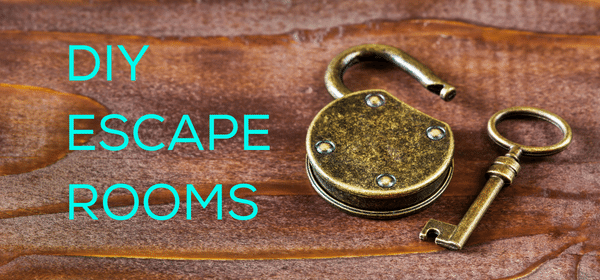Have you ever pondered over ways to make nursing simulation activities more engaging for students?
When nursing simulation activities become routine, it can be easy for students to lose interest and become distracted. This can be a major concern, especially when they are zoning out during critical topics. So, what can be done to prevent falling into a simulation rut?

Nursing escape rooms are a fun and interactive way to reinforce content, promote communication, and encourage teamwork among students. If you are interested in incorporating escape rooms into your simulation activities, but don't know where to start, look no further!
We're taking a closer look into the mind of Escape Room Expert (ERE), Traci Ashworth, who has designed nearly 25 escape rooms over the past five years. Traci shares her recommendations for creating an engaging escape room experience for students.
Follow these eight simple steps to create captivating nursing escape rooms that won't break the bank for your program:
- Form a small design team.
- Choose a topic and theme.
- Establish logistics.
- Set clear learning objectives.
- Use a well-structured escape room template.
- Develop puzzles and clues.
- Recruit a dry run team.
- Conduct dry runs, make necessary tweaks, and repeat.
Form a small design team: Having a partner to collaborate with will make your escape room experience stronger and more effective for students. A team of two to three designers is ideal, as having too many people can impede creativity.
Choose a topic and theme: This is where you can let your creativity flow. Consider incorporating non-conventional themes, such as TV programs, historic sites, museum heists, or scientific labs, into your escape room.
Establish logistics: Determine the number of nursing students and groups, the time required for the escape room and debriefing, the location, and budget.
Set clear learning objectives: The objective of the nursing escape room should be clear and aligned with your learning objectives.
Use a well-structured escape room template: A template is a useful tool for keeping your design process organized and aligned with your learning objectives. Here's a template for you to use.
Develop puzzles and clues: Traci is an expert in creating escape rooms on a shoestring budget. There are plenty of resources available to help you get started. Download budget friendly resources.
Recruit a dry run team: It's important to conduct a dry run as part of your simulation design process. Find colleagues or students who were not part of the design team to test your escape room.
Conduct dry runs, make necessary tweaks, and repeat: Take detailed notes during the dry run, and be open to feedback. Finalize your template and make sure anyone who uses it can execute the escape room in your absence.
You’re busy. We get it. Nursing escape room design can be time-consuming, especially for those unfamiliar with the concept. To get you started, here are some ready-made escape rooms created by sim2grow for you to download:



.jpg?width=352&name=s%20(5).jpg)